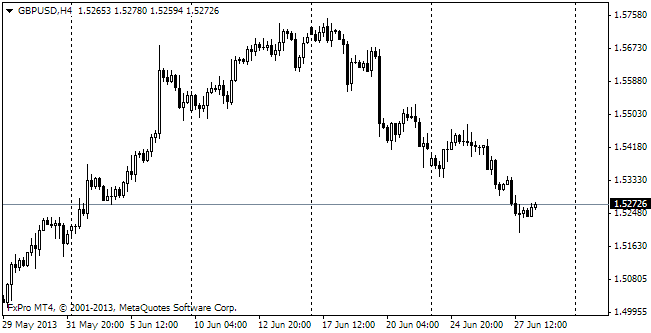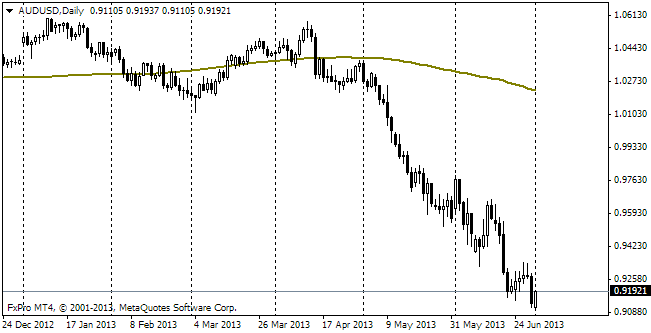EUR/usd
Last week was probably the period of change for the dollar. The American currency has been moving down already since the beginning of July, when Bernanke gave a speech, disproving the expectations of the stimulus rollback in the near future. Last week we saw something different. Bernanke's assurances were finally heard and accepted due to relatively poor employment statistics. According to the released data, in July the market added 162K of jobs – this is the smallest rate since March. However, the weak March was preceded by the abnormally strong February with its growth of 332K. Don't be taken in by the unemployment decline from 7.6% to 7.4%. It also happened due to the decrease in the economically active population. And it is actually pretty clear that the rows of active jobseekers are abandoned by those who after long weeks and months of continuous searches have lost all hope of finding a job. It's noteworthy that the average hourly earnings have fallen, which shows that employers are on the alert. The only bright spot in the report is the growth of employment in production for the first time in the last 4 months. Yet, the growth by 6K will hardly look very reassuring after the loss of 21K since February. Well, the US production hasn't recovered yet. Let's see how Obama's tax initiative will tell on these rates. On the whole, the employment stats cheered up eurusd, which was on the point of losing its positions during last week's trade. Now it is trading near 1.33, which corresponds to the upper bound of last week's trading range. The next important target of bulls can be at 1.34.

GBP/USD
The sterling is trying to save its face. The markets' desire to correct last week's growth was especially seen in the cable. The pair sank from 1.54 to 1.51 by the beginning of Friday. Anyway, Friday's release of the strong Construction PMI (57.0 against the expected 51.6) and the further selling of the dollar on the poor employment stats helped to bring the pair back to 1.53 by the end of the previous week. And the favourable data on the services sector, published at the beginning of the British session (60.2 against the forecasted 57.4) also stirred up optimism regarding the cable. Against such an upsurge of rates the return of the sterling to 1.5350 doesn't look very surprising. But now pops up a question – isn't it growing too fast? Let's see how the pair will behave at 1.54.

USD/JPY
The yen remains the best choice for those who prefer wide-range trading. Having bounced off 97.50 last week, the pair set out in the upward direction in the second half of the week, but soon again reversed at 99.93. Now the pair is being sold at 98.30.

AUD/USD
The aussie keeps sliding down. The recent speeches of the RBA's head and inflation rates have assured the markets that tomorrow there will be another rate cut to the new historic low of 2.00%. At present audusd is below 0.90 and at the beginning of trading it hit 0.8840. Be careful with tomorrow's meeting – there are risks that there won't be any rate cut, which will make the Aussie much stronger.
